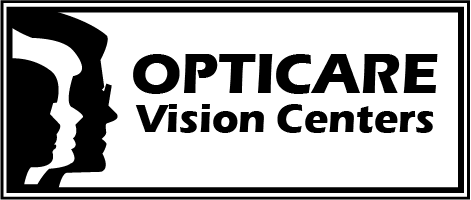The following article appeared in TheExaminer.com on June 28, 2016
Father of Viral Sensation, Optometrist Share the Importance of Infant Eye Exams
By Brandi Walker
Last summer, an adorable 11-month old girl name Piper warmed hearts on YouTube when she tried on her new pink glasses and saw her parents clearly for the first time. The pretty new glasses have been helping the farsighted baby to meet all developmental vision milestones. This is thanks to the proper diagnosis and quick treatment from her eye doctor. In fact, next month marks one year since she tried on her pink specs and now she also has a blue pair to go with her outfits.
Piper’s parents, along with the American Optometric Association (AOA), are urging parents to take their little infants to see a doctor of optometry to identify eye health issues from the start. According to the AOA’s 2015 American Eye-Q survey, only 19 percent of respondents knew that a baby’s first eye assessment should take place between 6 to 12 months. Why is this the case?
Piper’s eye doctor, Dr. Josiah Young, answers this question and shares advice for parents with babies experiencing eye problems. The 11-month old’s father, Andrew Verdusco, also shares when he first realized his daughter’s eye problems and how she’s enjoying her new blue spectacles.
Brandi Walker: When did you first realize that your baby daughter Piper was experiencing eye health problems?
Andrew Verdusco: At 10 months old, Piper wasn’t meeting the correct developmental milestones for her age. We realized she wasn’t crawling like her older brother had done at that age. We would have never recognized that the reason she wasn’t hitting the correct milestones was because of a vision problem but thankfully Piper’s mom works for an eye doctor and we decided to take her in for an eye assessment from an optometrist.
B.W.: What was she diagnosed with and what was she treated with for her condition?
A.V.: Optometrist and member of American Optometric Association (AOA), Josiah Young, O.D., diagnosed Piper as extremely farsighted by dilating her pupils. She was prescribed glasses and when we picked them up a week later, her new ability to see was obvious by her smile.
B.W.: How has her progress been with her vision?
A.V.: Piper has been reaching every developmental milestone at the appropriate time since she received her new glasses one year ago. We just brought her in for a follow up with Dr. Young and he said her vision is improving thanks to her eyeglasses. She’s about to turn two and doing great!
B.W.: How is she enjoying her new blue spectacles?
A.V.: She loves them! She loves it when we coordinate her outfits with the glasses she is wearing that day.
Doctor of Optometry, Dr. Young:
B.W.: Why do you think parents aren’t unaware that a baby's first eye assessment should be between 6-12 months old?
Dr. Young: As a parent myself, I know there are a lot of things to worry about with your child in that first year of life (and beyond!). Because many of us take our good vision for granted, we forget how critical it is to a child’s development. The infant has no way to tell their parents that he or she isn’t seeing well out of one or both eyes. The best way to ensure that the child is on track for proper visual development is to have a comprehensive eye assessment that can detect vision problems and other eye diseases. We know that the earlier we can diagnose and treat an eye health or vision problem, the better chance the child will have at seeing and developing normally. A good time for a first eye assessment is between 6 and 12 months of age.
B.W.: What advice do you have for parents with babies experiencing eye health problems?
Dr. Young: Bring your child in for their first infant eye assessment early. The AOA recommends that a baby’s first eye assessment should take place between 6 to 12 months. If no problems are noted by the optometrist or parents, their next assessment should be around age three or before they start preschool. Clear vision is critical to a child’s development and learning. If a vision problem goes untreated, the child can have significant delays in development. This could potentially put the child behind as he or she enters school. Piper’s mom and dad brought her in for an eye assessment because she was not meeting developmental milestones— like crawling— at 10 months. Within a few weeks of wearing the glasses, Piper began to meet her developmental norms for her age.
The AOA’s public health program, InfantSEE, provides comprehensive infant eye assessments between 6 and 12 months of age as a no-cost public service. Visit the AOA’s doctor locator at aoa.org to find an InfantSEE provider near you.

